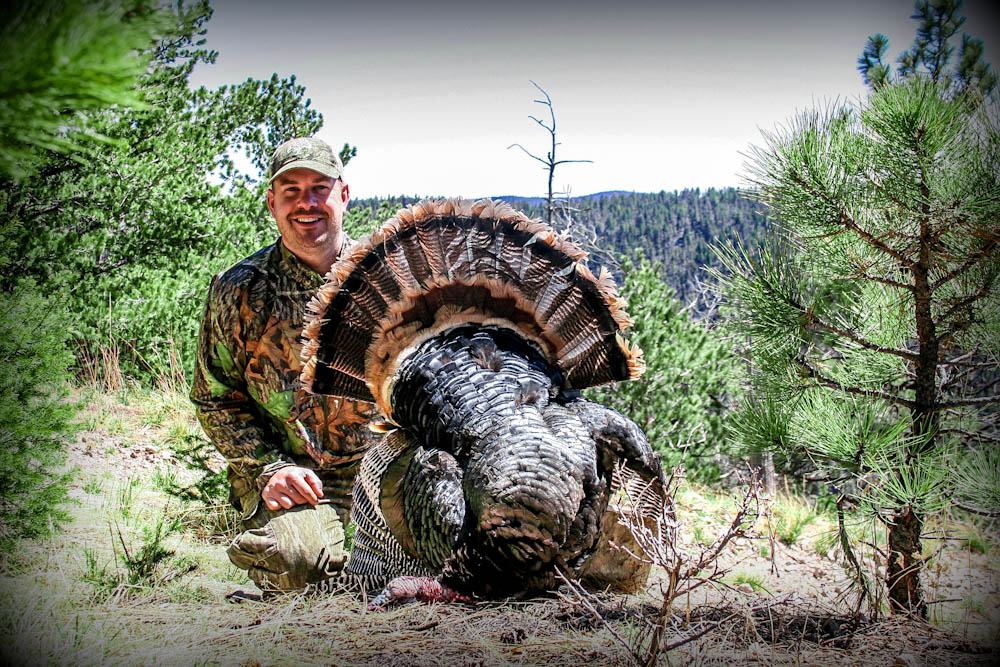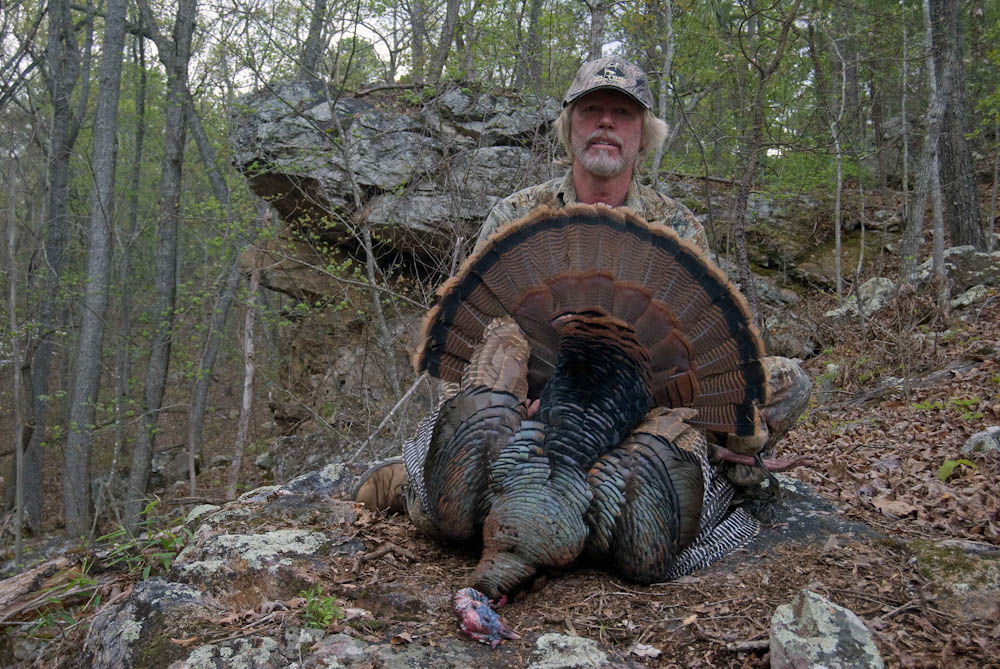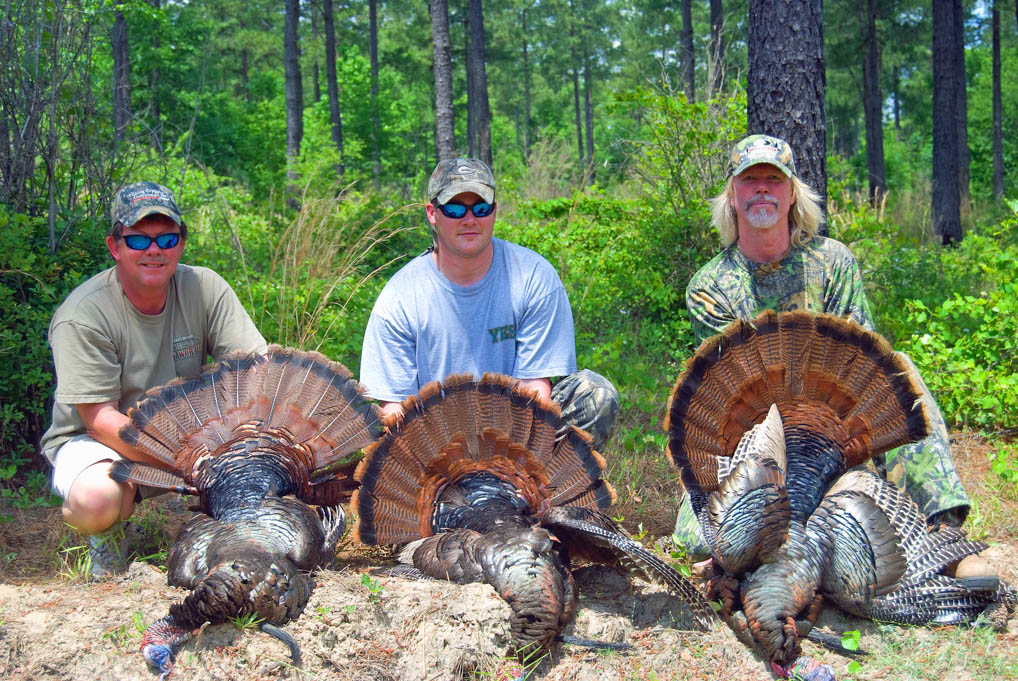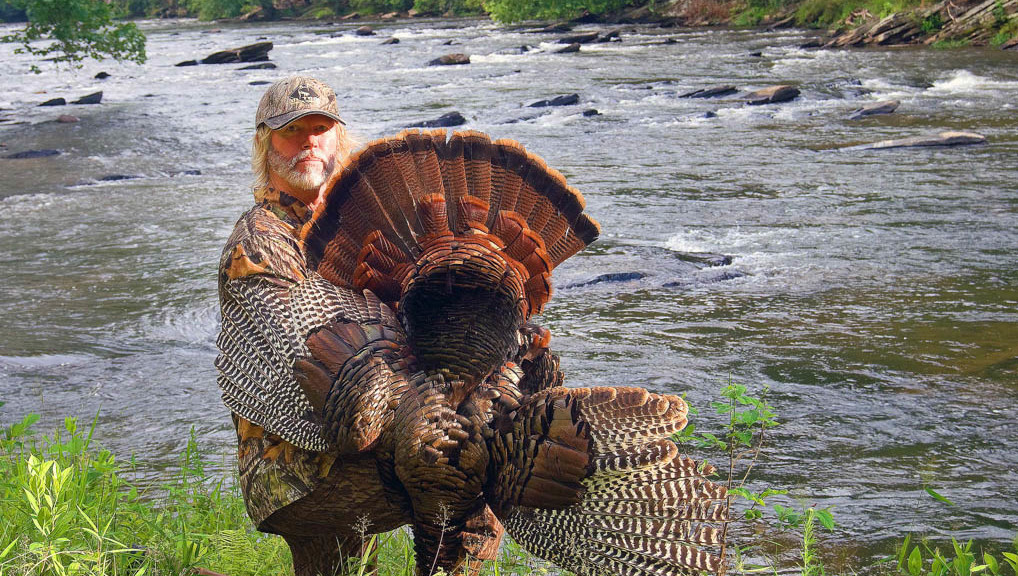A Turkey Hunters Motto for Consistently Taking Turkeys
My turkey chasing days began in 1992 in a Flint River swamp in Georgia. Although I learned as much as I could by listening to cassettes, watching videos, and reading magazines, most of my lessons came through trial and error and time spent in the woods alone. Since I lived two and a half hours away from where I hunted, and had to spend the night, I chose to hunt until noon, eat lunch, and go back in for afternoon hunts. I believed it was a matter of putting your hours in and as long as I was in the woods there was a chance of killing a bird. Due to this committed effort and a good bird population, I was lucky enough to kill my share of gobblers. In fact, aside from my first season I was somehow getting my limits every spring. Much had to do with luck and many were flukes, but somehow each season it came together and I kept taking birds.
Because of the flat and mostly open terrain that existed in the swamp, especially early in the season before it greened up, approaching and moving on birds was challenging. I’d be aggressive when I could but I often played it safe by limiting my charges towards a gobbler and setting up and staying with an area instead of moving. Part of the “playing it safe” part was due to the openness but some was due to a lack of confidence in just how to go about it and what I could get away with. And it worked often enough to keep me satisfied.
After hunting for a few years, I met and started sharing the woods with someone that had turkey hunted for much longer than I had. He was the first person I knew that could sound good on a mouth call and was a pure run and gun guy. When he put on his vest he turned into a Tasmanian devil turkey hunter and his game plan each and every day was one of pure aggression. He’d methodically move and cover lots of ground and on days birds gobbled, he would kill one or get close, but on days they didn’t, he became human and came back empty handed. We didn’t actually hunt together but shared the woods numerous times going our separate ways. But I listened to him when he talked about what he did especially on the “run and gun” stuff. Even he admitted the swamp offered challenges compared to the hilly terrain he’d hunted previously when it came to flanking or moving on birds, but he killed his share with his style of hunting. Surprisingly, as aggressive as he was, he’d often be back at the truck by 9:30 a.m. or out eating breakfast, while I’d hunt until lunch. Prior to us hunting together, he didn’t hunt afternoons.

Three years after we met, he went to Texas with me and after I’d taken my third Rio Grande gobbler, he was still hunting hard for his second bird. He seemed to be struggling and putting pressure on himself so to make him feel better and because I believed it was true, I commented that he was a better caller and hunter than me and that I just kept getting lucky, and must have been in better spots.
He turned around and said. “You can say what you want but no matter where we hunt or what the conditions are, you have an uncanny knack for finding a way to kill birds”. Of course this was gratifying and made me feel good causing the rear snap to blow off my hat as my head swelled because these words coming from him meant something.
It made me stop and think about what I was doing and how I was killing birds. The truth was, I believed many of my birds came from the “Blind Squirrel Rule “because of the hours I put in, and often I really was lucky with a few fluke birds thrown in. But, when I stopped and thought about it, I realized I did put a lot of thought and effort into how I approached turkey hunting and was not set in my ways in terms of how to hunt them on any particular day. I wasn’t fixed in either camp when it came to “run and gun” or “deer hunting” them and was constantly racking my brain trying to figure out how to get a bird each time I was in the field. If they gobbled I moved more. If they were quiet I slowed down and hung with a spot. More importantly, I didn’t give up easily and made myself hang with a hunt longer even when I was hungry and started thinking about how good lunch was going to be. Coming out for breakfast wasn’t even a consideration. I wanted and needed that next fix badly which drove me to hunt hard and to dig deep to figure out how to make it happen on each hunting session. I concluded that what I lacked in knowledge, I made up in with effort.
A New Motto
His compliment helped my confidence and I decided to incorporate his “Finding a Way “comment as my new hunting motto. This would be a simple but driving clause that I’d insert into my turkey hunting psyche and repeat to myself on the days things were tough and I needed a push.
The reality is that at the end of the day, the pay off of actually killing a gobbler, or coming back empty handed, is the result and outcome of a combination of decisions that we make during our hunts. How well we adapt to the hand we’re dealt on any given outing will be the determining factor. The “Decision Combination” aspect (See: “Good Decision Combinations Kill Turkeys”) is a constant that applies to any hunting or fishing outing, but applying the “Find a Way” attitude in my view is a magnifier of the drive. The focused effort of being patient, persistent to the point of being relentless , and constantly trying to find a way that will pay off enough times during a season to result in birds over the shoulder that might not have happened otherwise is the pay off.
For example: My thought process used to be that once I approached the end of deer or turkey season in the past, I would really push hard on that last weekend trying to make something happen knowing I was running out of time. A sense of desperation crept in causing me to try something different and really fast forward my thinking to be successful or the clock would run out on me. It’s the same way on travel hunts when you hit that last day and you still need a bird. The difference now is; I think and operate to a large degree like this all the time. I’m trying to push and find a way right now, today, to come up with a way to put myself or someone else in front of a bird. When you read things like “Texas Stampede” or “Chasing Montana Merriams” you get a sampling of outside the box efforts that are a result of the “find a way” thought process.
In reality we are always trying to “find a way” but for me this means digging deeper and avoiding giving up easily. It’s being stubborn when it comes to throwing in the towel. And as with many things in life it comes down to how bad you want it and how hard you’ll push to get it.
It’s aggressive thinking although sometimes the selected approach may seem passive, but there’s always a built in sense of urgency.
For the most part I’m sure my approaches to turkey hunting are the same as most others in that I start out taking the traditional approaches to typical situations. Like any turkey hunter I am always paying attention to any turkey sign I see and compiling it with any other historical information associated with a particular spot. If I hear birds I go after them. If it’s new territory and I don’t hear them, I keep moving until I find birds or such good sign that I believe setting up and calling may be worthwhile. If its familiar ground that normally has birds, I may troll for a while trying to strike up a willing bird or I may decide that they’re just quiet and may implement a non aggressive fall back plan to deal with silent birds and go to the “area plan”.

Learning from Others
As mentioned at the beginning of this piece, I was killing turkeys and getting my limits with what I had learned on my own. But my aggressive “run and gun” approach game was improved from being around and listening to my friend who had years of experience doing it. This was especially useful once I started hunting areas outside the swamp with terrain that was more condusive to moving and flanking.
But he also benefitted in that he learned to slow down when birds were quiet, hunt an area, and to hunt later in the day and afternoons. It rounded us both out in a way that allowed us handle and kill more turkeys, and we killed them under a wider range of conditions and not just on days they gobbled.

We all have our own styles and preferences but any time you can spend with another hunter who has been successful, you’ll gain a new insight and learn new tricks to add to your existing arsenal and ways to kill turkeys. The key in my view is to vary your approach not be one dimensional. If you’ve got unlimited time to hunt, then you may have the luxury of hunting in a particular style and way that becomes a numbers game in that you’ll hunt enough days in which your approach will eventually cross with the conditions that allow it to work. In other words if you’re a run and gun guy and stay with it, even though you may be bumping birds left and right on quiet days, you’ll eventually get your birds on the gobbling days and it’s hard to argue with success. It goes the same for just setting up and hunting areas. If you set anywhere long enough you’ll probably have a chance to kill a turkey. But, if you have a limited number of days to hunt, the more adaptable you can become, the better your chances will be if you can find the right way to attack that specific day.
Find a Way Mentality
There are many turkey hunters here at GSN that I believe think and operate this way. Several have impressive seasons year after year consistently taking their gobbler limits and helping others get birds as well. They appear gifted which they are, but I suspect if you look deeper you’ll find they’re turkey hunting mind is mounted on a one ton frame and they’re fueled with drive that causes them to constantly rotate thoughts and options through their minds, trying to find a way to take that next gobbler.
To operate under the “Find a Way” mentality requires stronger than average drive that includes, determination and persistence topped off with managed patience. It requires being relentless and putting your hours in. It means thinking outside the box when other approaches aren’t working. Adopting the motto may mean that you have to go over one more ridge, hunt one more hour, try one more flanking movement, or check out one more field before you leave to go home. It requires self discipline and pushing yourself harder and longer. It means you’ve really got to want it and be willing to put in that “driven mentality” effort and hunt smart to get it. But each time you bring a bird out over your shoulder that you know came from pushing yourself beyond what you may have done in the past or many other hunters are willing to do, you’ll know you worked hard and “Found the Way” on that particular day.
Bobby Parks
Grand Slam Network.com
Mossy Oak Pro Staff
Ol Tom
